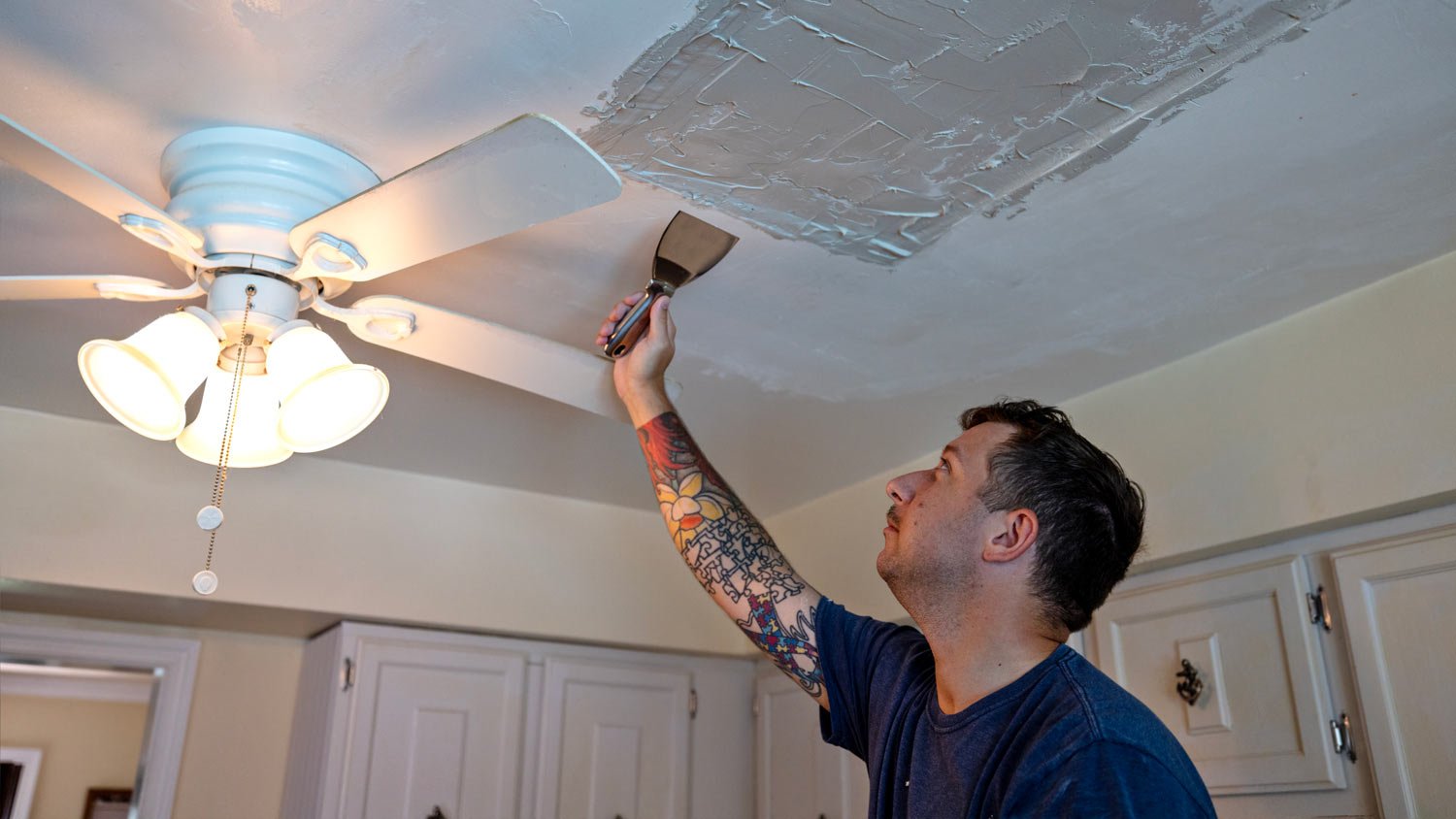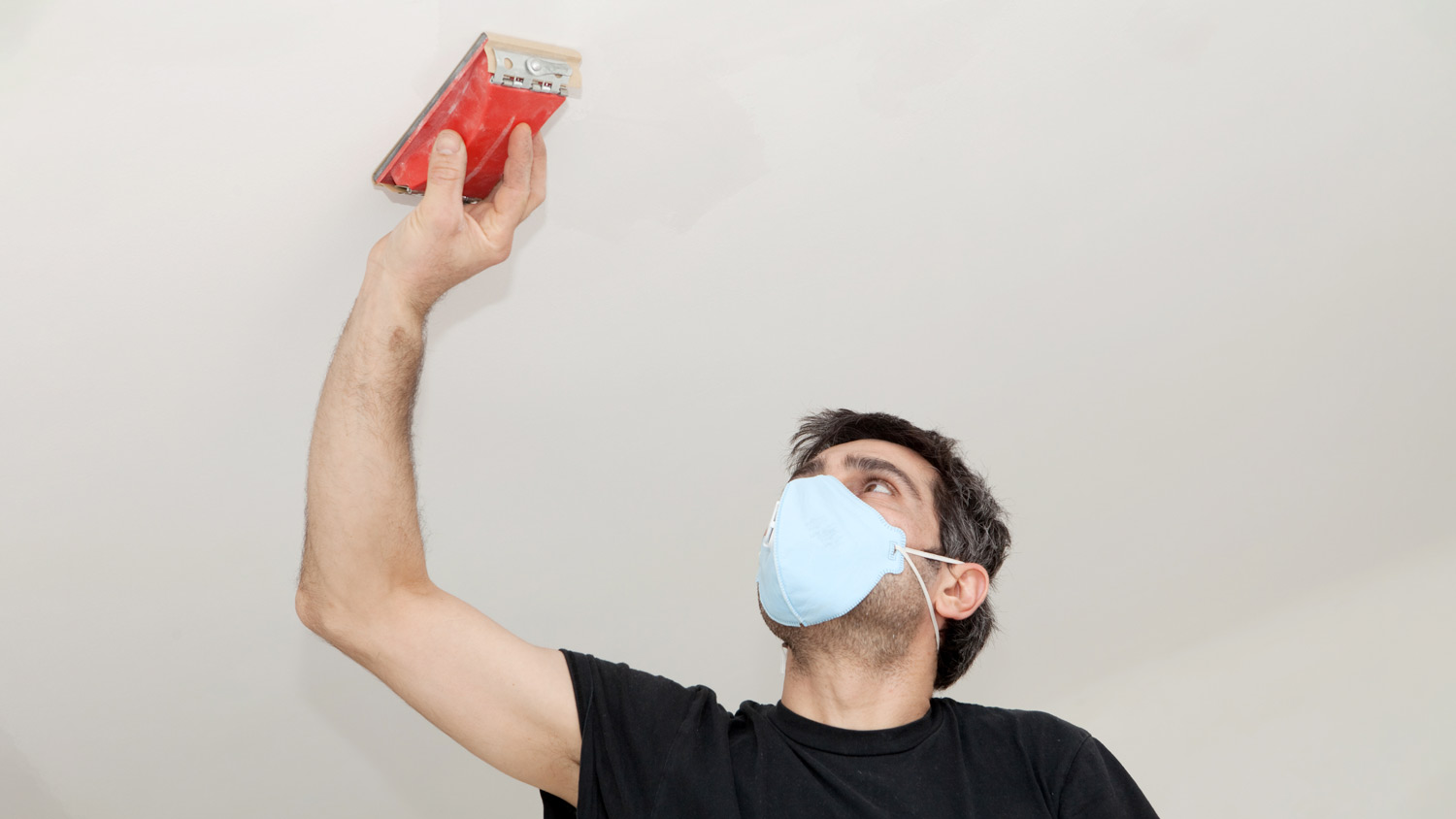
Need to know how much blueprints cost for your new construction project? Use this comprehensive cost guide to get an accurate estimate for your build.
Don’t let a sagging ceiling drag you down


Water damage is often to blame for sagging plaster ceilings, but it isn’t the only cause. In other cases, sections of your ceiling might slump after years (or decades) of natural deterioration, structural movement, or improper installation. If that happens, you can grab a few tools and supplies and repair the damage yourself. Get started by reading this step-by-step guide on how to fix a sagging plaster ceiling.
As a heads up, this guide doesn’t explain how to fix a water-damaged plaster ceiling. Instead, it describes how to deal with plaster that’s pulling away from the lath for other reasons, including:
Age-related wear and tear
Foot traffic or vibration
Structural movement
Poor installation
If your ceiling is sagging because of a roof or plumbing leak, you’ll need to take a different approach—and that starts with identifying the source of the ceiling leak. After you deal with that, you can follow the rest of the steps in this guide.
Lay down your drop cloth under the sagging section of your ceiling. Then, set up your ladder nearby, but don’t place it directly on top of the cloth (otherwise, it might slide while you’re on it). Make sure to follow other ladder safety guidelines, too.
Put on your safety glasses and mask, then climb the ladder and use your hand to gently push the sagging part of the plaster upward. If it feels loose or gives easily, the plaster has likely separated from the laths, causing the ceiling to slump.
Gently knock along the damaged part of the ceiling to locate the laths behind the plaster.
Attach a plaster washer to a drywall screw and drive it through one of the laths with your drill. Repeat this process several times to stabilize the sagging plaster in multiple areas.
If you can’t find the laths or feel uneasy about drilling into your ceiling, consider hiring a professional who can fix a sagging ceiling rather than tackling this one yourself.
Once the screws are secure, scrape away any loose or crumbling plaster with a putty knife.
When you finish, use your vacuum hose to suck up any broken bits of plaster from the damaged section of your ceiling. Then, wipe down the area with a damp cloth to remove leftover dust and debris.

Spray any exposed lath and existing plaster with water. Keeping your work area damp will help the plaster patching compound adhere properly and prevent moisture from being drawn out of the fresh compound.
Next, apply a layer of plaster patching compound to patch the plaster on your ceiling. When you’re done, score it with the toothed edge of a trowel or a plaster scarifier. Check the suggested drying time on the product’s packaging and leave it to dry for that amount of time.
Add a layer of drywall tape over the washers and the repaired section of plaster, then use a trowel to apply a layer of joint compound over the tape. This will help conceal the washers and the patched plaster.
Let the joint compound dry as outlined in the manufacturer’s instructions. To speed up the drying process, try to reduce the room’s humidity level and open a window or run a fan for better ventilation.
Apply another coat of joint compound, making sure it overlaps the previous coat by a few inches in each direction. Smooth it out with your trowel so that it blends in with the rest of your ceiling, and allow the joint compound to dry.

When everything is dry, sand the area with fine-grit sandpaper. If the surface is still uneven, you can apply more joint compound, let it dry, and sand the ceiling again.
After you finish, wipe it all down with a damp cloth to clear away any dust. Let it dry before moving onto the final step.

Prepare the area for painting by applying a coat of primer over the patched plaster. When it’s dry, paint it the same color as the rest of your ceiling. You’ll probably need at least two coats to help it blend in.
Alternatively, you can repaint your entire ceiling—including the patched area—a new color. However, it’s important to fix any cracks, holes, and other damage before painting over plaster.
Repairing part of a plaster ceiling isn’t overly difficult, but it isn’t the most beginner-friendly home improvement project, either. For starters, it involves working at heights and cutting away parts of your ceiling—both of which could be daunting for newer DIYers. Plus, applying joint compound can be tricky—and if you don’t do it correctly, you could end up with a patchy mess on your ceiling.
If you aren’t comfortable with that type of work, reach out to a professional. It’s also a good idea to skip this DIY and call a ceiling company near you if you have multiple sagging sections or any other significant ceiling damage. When you hire a pro, repairing a sagging plaster ceiling costs around $80 per square foot.
From average costs to expert advice, get all the answers you need to get your job done.

Need to know how much blueprints cost for your new construction project? Use this comprehensive cost guide to get an accurate estimate for your build.

Few things elevate your outdoor space like a landscape architect can. Learn about how much a landscape architect costs and what affects your total.

Get transparent draftsperson cost to hire info, including average prices, cost factors, and tips to help homeowners budget and save on drafting services.

Knowing how to find an architect for your construction project will help bring your design ideas to life. Use this guide to find the best one.

Learn about Renaissance-style architecture, including what defines the form and how to incorporate the crucial elements of style and design into your home.

Blueprints are a critical part of the construction process. Learn what blueprints are, how they’re used, and why they’re so important.